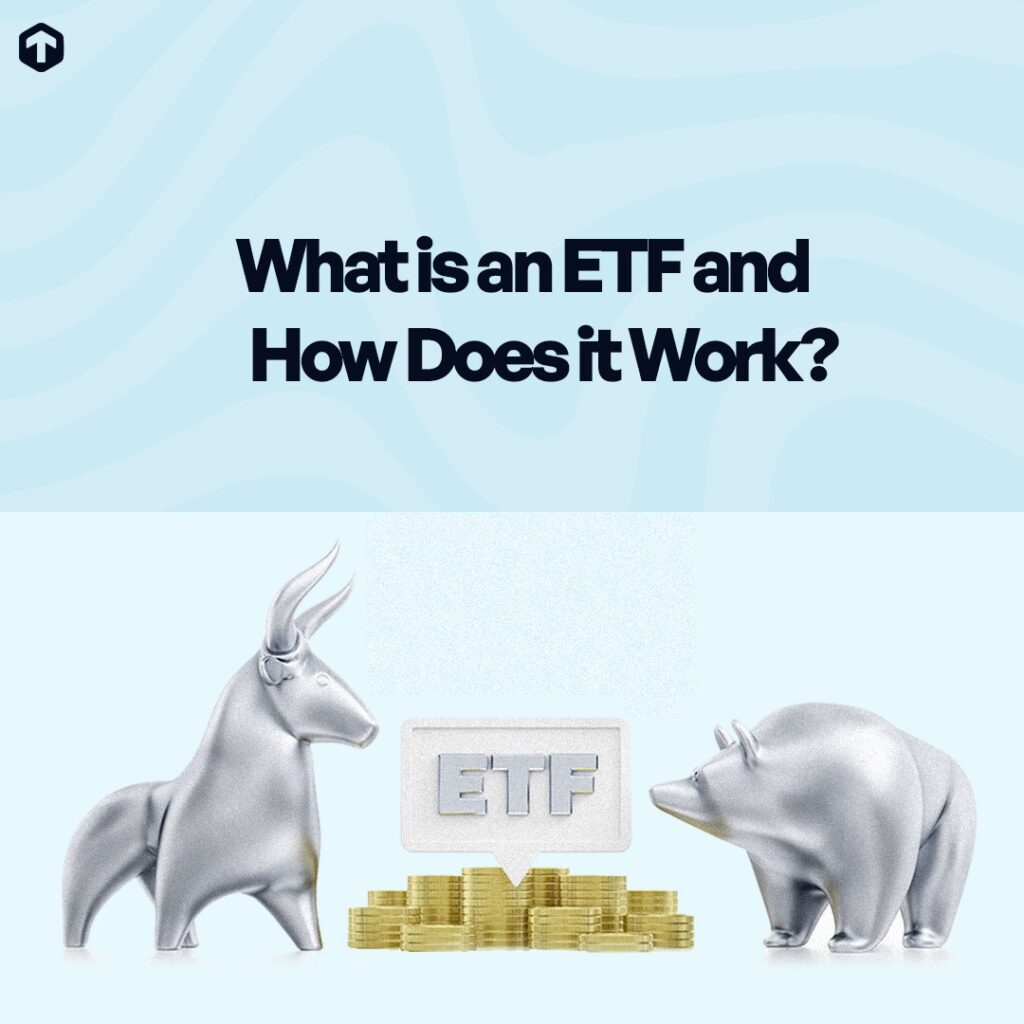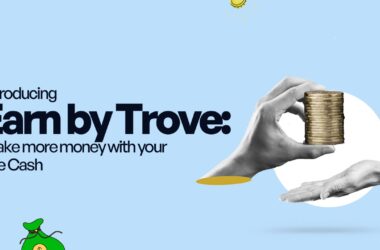You may be wondering, What exactly is an ETF, and how does it work?
Exchange-traded funds, or ETFs, have been a popular investment vehicle over the past few decades, offering investors a diversified portfolio at a low cost with the flexibility of trading shares on the stock exchange.
However, if asset investment is new to you, it is very essential to understand the ins and outs of ETFs. In this post, we will look at the fundamentals of ETFs – what they are, how they work, the various types available, and its benefits.

Understanding ETF and How Does it Work?
At its core, an Exchange-Traded Fund (ETF) is a type of investment fund that holds a collection of assets, such as stocks, bonds, or commodities, and trades on stock exchanges.
Essentially, an ETF combines the features of both mutual funds and individual stocks, offering investors exposure to a diversified portfolio while allowing them to trade shares throughout the trading day at market prices.
The mechanics of an ETF are relatively straightforward. Fund managers create and manage the ETF, selecting specific assets to include in the fund’s portfolio based on its investment objective. Investors can then purchase shares of the ETF, which represent proportional ownership of the underlying assets. These shares can be bought and sold on stock exchanges like any other publicly traded security, providing investors with liquidity and flexibility in managing their investments.
Types of ETFs
1. Equity ETFs
These ETFs invest primarily in stocks. They can focus on specific sectors, regions, market capitalizations (large-cap, mid-cap, small-cap), or follow broad market indices like the S&P 500, NASDAQ, or Dow Jones Industrial Average.
2. Fixed-Income ETFs
These ETFs invest in bonds and other fixed-income securities. They can target various segments of the bond market such as government bonds, corporate bonds, municipal bonds, or specific durations (short-term, intermediate-term, long-term).
3. Commodity ETFs
These ETFs invest in physical commodities like gold, silver, oil, or agricultural products. They may hold the physical commodity itself or invest in futures contracts to track the price movements.
4. Currency ETFs
These ETFs invest in foreign currencies or currency baskets. They allow investors to gain exposure to the currency markets without directly trading currencies on the foreign exchange (Forex) market.
Benefits of Investing in ETFs
- Diversification: By holding a basket of assets, ETFs inherently provide diversification, helping to spread risk across different securities and mitigate the impact of individual stock or bond performance.
- Liquidity: As ETFs trade on stock exchanges, investors can buy and sell shares throughout the trading day at market prices, providing liquidity and flexibility in managing their investments.
- Low Costs: ETFs typically have lower expense ratios compared to traditional mutual funds, making them a cost-effective option for investors seeking broad market exposure.
- Transparency: ETFs disclose their holdings regularly, allowing investors to know exactly what assets they own within the fund’s portfolio.
- Tax Efficiency: Due to the unique structure of ETFs, they often exhibit greater tax efficiency compared to mutual funds, resulting in potentially lower tax liabilities for investors.
Is an ETF a Good Investment?
While ETFs offer numerous benefits, whether they constitute a good investment depends on various factors, including an investor’s financial goals, risk tolerance, and investment horizon. ETFs can be suitable for a wide range of investment objectives, from long-term wealth accumulation to short-term trading strategies.
However, you need to conduct thorough research, assess your investment objectives, and consider factors such as fund expenses, performance history, and underlying assets before investing in an ETF.
How to Invest in ETFs in Nigeria
Here are general steps to start investing in ETFs in Nigeria:
- Research and Education: Learn about the stock market, different investment options, and the companies you’re interested in.
- Select a Reputable Platform: Choose a licensed and reputable investment platform that suits your needs. An example of such a platform is the Trove app
- Create an Account: Sign up on the chosen platform, complete KYC requirements, and fund your account.
- Set Investment Goals: Define your investment goals, whether short-term or long-term.
- Diversify Your Portfolio: Consider diversifying your investments across different sectors to manage risk.
- Monitor and Adjust: Regularly monitor your investments, stay informed about stock market trends, and adjust your portfolio as needed.

Why Choose the Trove App?
Here are some reasons you should invest in ETFs using the Trove app:
- Investment Options: This app allows you to invest in various financial instruments, such as stocks, bonds, and exchange-traded funds (ETFs). It also allows you to create a well-rounded and diversified portfolio.
- Gift Stock Features: Another outstanding feature of this app is that it allows you to gift stocks to your friends and family. With Trove, you can gift as little as a dollar’s worth of stock so that your friend or family can watch their holdings grow over time.
- Accessibility: One of the key features of Trove Finance is its user-friendly platform, designed to make investing accessible to a broad audience. The platform often includes a mobile app, enabling you to manage your investments on the go.
- Security and Compliance: Trust and security are paramount in the financial industry. Trove app uses 256-bit encryption and other cutting-edge security technologies to ensure your personal information is fully encrypted and securely stored.
- Earn with Trove Feature: It’s a recently launched fixed-income feature on the Trove app that allows you to earn interest on your money. There are two fund options to save in. You can save your funds in naira or dollars. In naira, you can gain interest of up to 16% per annum while in dollars, you can earn up to 7.5% interest per annum.
- Customer Support: A responsive and helpful customer support system is essential for any investment platform. Trove provides customer support through various channels to assist users with their inquiries, technical issues, or other concerns.
Steps on How to Invest in ETFs on Trove App
- Create your account: Sign up on the web or Download the trove app on your phone using Apple Store or Google Play. Make sure to complete the KYC requirements.
- Fund your wallet: Make payments using your Verve, Mastercard, or Visa debit cards, online banking, or bank deposits
- Buy ETFs: Enter the etf you would like to buy and click the proceed to payment button. A confirmation screen will come up to review your order, if you made any mistake at this stage, you can go back and make any necessary changes, if not, click “confirm transaction”.
Conclusion
Exchange-traded funds (ETFs) offer investors a versatile and cost-effective way to gain exposure to a diversified portfolio of assets. With their liquidity, transparency, and potential for tax efficiency, ETFs have become a popular choice for investors seeking to build wealth, manage risk, and achieve their financial goals.
By understanding the fundamentals of ETFs and how to invest in them, individuals can harness the power of these innovative investment vehicles to enhance their portfolios and pursue long-term financial success.
Visit Trove Finance to download the Trove app to get started!!






